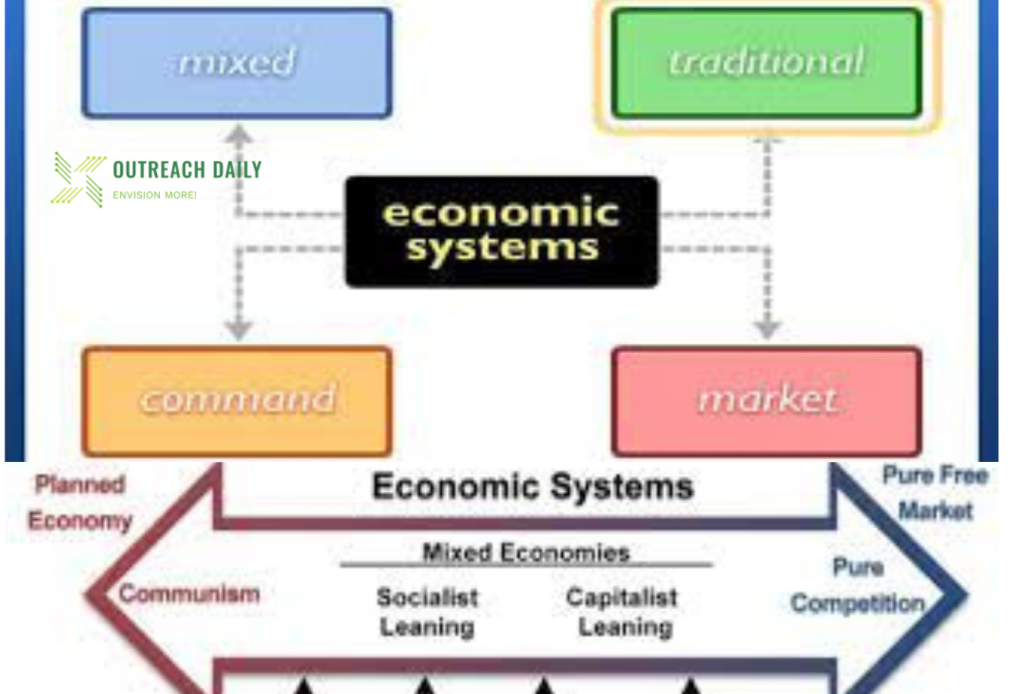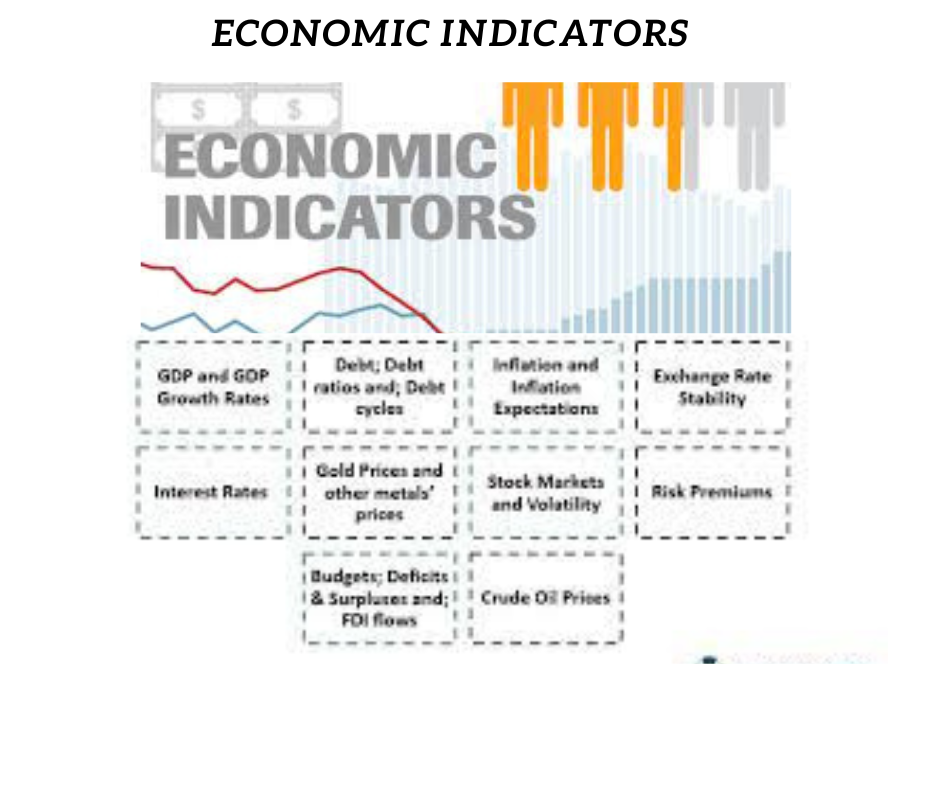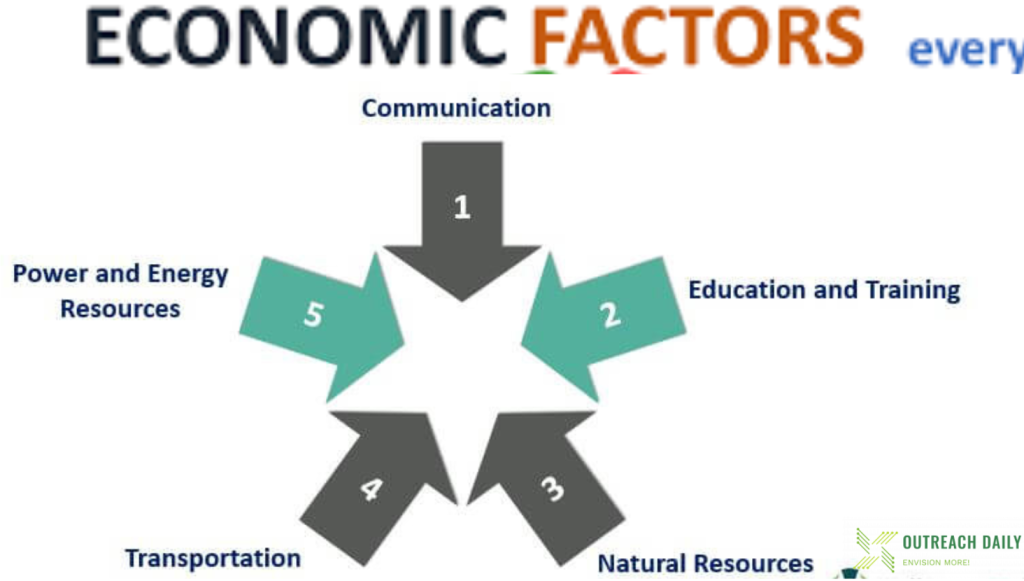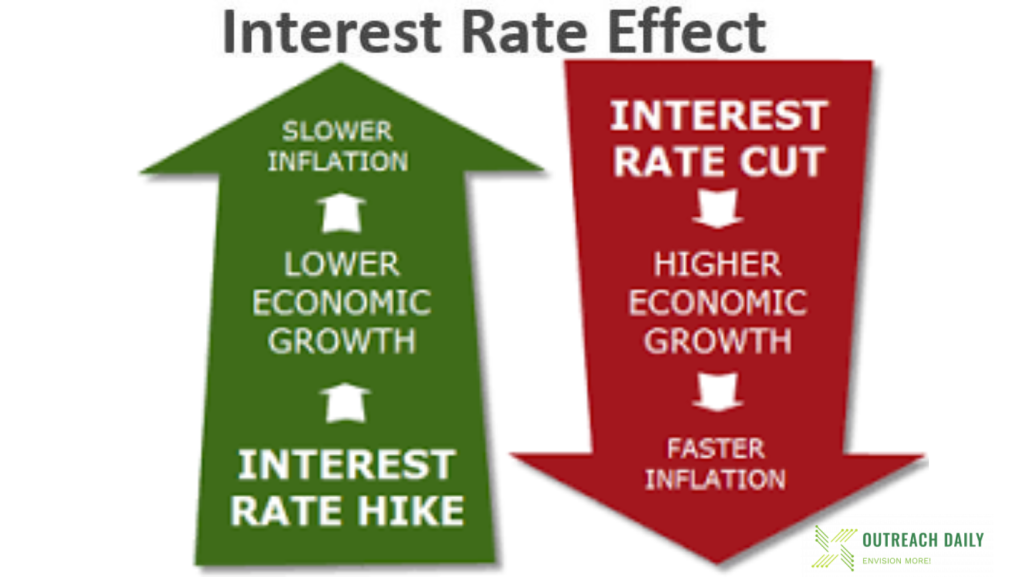Introduction:
An economic system is a means by which societies or governments organize and distribute available resources, services, and goods across a geographic region or country. Economic systems regulate the factors of production, including land, capital, labor, and physical resources. An economic system encompasses many institutions, agencies, entities, decision-making processes, and patterns of consumption that comprise the economic structure of a given community.
Types of Economic Systems:
There are many types of economies around the world. Each has its own distinguishing characteristics, although they all share some basic features. Each economy functions based on a unique set of conditions and assumptions. Economic systems can be categorized into four main types: traditional economies, command economies, mixed economies, and market economies.
Traditional Economic System:
A traditional economy is one in which humans provide themselves with sustenance by customary means, such as hunting, fishing, gathering, or slash and burn agriculture. This has been the most prevalent economic system for most of human history. In a traditional economy, sustenance is distributed by traditional social relations, such as by family ties. Traditional economic systems do not lead to economic growth, but they produce little waste.
Some parts of the world still function with a traditional economic system. It is commonly found in rural settings in second and third world nations, where economic activities are predominantly farming or other traditional income-generating activities.
There are usually very few resources to share in communities with traditional economic systems. Either few resources occur naturally in the region or access to them is restricted in some way. Thus, the traditional system, unlike the other three, lacks the potential to generate a surplus. Nevertheless, precisely because of its primitive nature, the traditional economic system is highly sustainable. Plus, due to its small output, there is very little wastage compared to the other three systems.
Command Market Economy:
A command economy is one in which the power of production and distribution is centralized in the hands of a society’s rulers or ruling class. Such centralized economies were characteristic of the earliest civilizations, such as Ancient Egypt, China, and the Incan and Mayan kingdoms. These economies could produce massive amounts of surplus wealth, and rulers ordered the construction of impressive monuments such as the Pyramids of Giza and the Great Wall of China. Unlike in traditional societies, these societies had a large slave or slave-like class which worked for the benefit, and even glory, of the elites. The feudal system of medieval Europe is also considered a type of command economy.
In the twentieth century, command economies became a feature of socialist and communist societies. Although these economies allowed for quick industrialization, they were often marked by extreme inefficiency, compelled labor (such as in brutal work camps) and starvation. Except for North Korea, most communist societies today have oriented their policies toward a market economy vs a command economy.
In theory, the command system works very well as long as the central authority exercises control with the general population’s best interests in mind. However, that rarely seems to be the case. Command economies are rigid compared to other systems. They react slowly to change because power is centralized. That makes them vulnerable to economic crises or emergencies, as they cannot quickly adjust to changing conditions.
Mixed Economy:
A mixed economy is one in which the characteristics of different types of economies coexist in the same system. In a sense, all economies are mixed economies, combining some traditional, command, and market aspects. It is likely that there has never been an economy which was purely a command economy or a market economy. The great command economies of the past had traditional aspects to them, and the centralized economies of the communist countries became more market like after planned economies lead to major crises. Likewise, capitalist countries have found it necessary to exercise some economic control in order to break up monopolies, enforce safety standards, and provide for public services such as education and infrastructure. Mixed economies are the most common economic system in the world today.
Mixed systems are the norm globally. Supposedly, a mixed system combines the best features of market and command systems. However, practically speaking, mixed economies face the challenge of finding the right balance between free markets and government control. Governments tend to exert much more control than is necessary.
Market Economy:
A market economy is an economy which is decentralized in its nature. A decentralized economy allows private individuals and groups to control the production and distribution of goods, rather than the government. Historically, the development of market economies meant that economic and governmental power, which had formerly been held in the same hands, was split between different groups of people. Market economies developed in Europe from around the 16th century, and went through several stages over the following centuries: mercantilism, commercial capitalism, industrial capitalism, and, most recently, state capitalism. A pure market economy is known as a capitalist system, although most economic systems that are widely regarded as capitalist require a certain level of government oversight to function fairly and efficiently.
The market economic system is mostly theoretical. Because a pure market system doesn’t really exist. As all economic systems are subject to some kind of interference from a central authority. For instance, most governments enact laws that regulate fair trade and monopolies.
From a theoretical point of view, a market economy facilitates substantial growth. Perhaps, growth is highest under a market economic system.
A market economy’s greatest downside is that it allows private entities to gather a lot of economic power, particularly those who own resources of great value. The distribution of resources is not equitable because those who succeed economically control most of them.
Conclusion:
To conclude, Economic systems are grouped into traditional, command, market, and mixed systems. Traditional systems focus on the basics of goods, services, and work, and they are influenced by traditions and beliefs. A centralized authority influences command systems, while a market system is under the control of forces of demand and supply. Lastly, mixed economies are a combination of command and market systems.

The writer is having vast experience in Banking and Finance sector for over one and half decade, where during his period of work he has experienced different economic and development initiatives taken for the wellbeing of the public masses through the banking channel.
He has worked for the Microfinance banks which are offering community based services among the under developed segment of the society.
The major work done in Financial Inclusion where several hundreds of people were brought to Banking channel to improve their businesses.
The under served segment of society like woman were given the chances to change their lives through credit facilities to grow their home based businesses which is also an imitative of Women Empowerment.
The Writer has also worked against different social issues and highlighting them for positive change in the society through public awareness and their active involvement to reach to the solution.
This journey of empowering people is on going and is never lasting till the time last person remains underserved.







